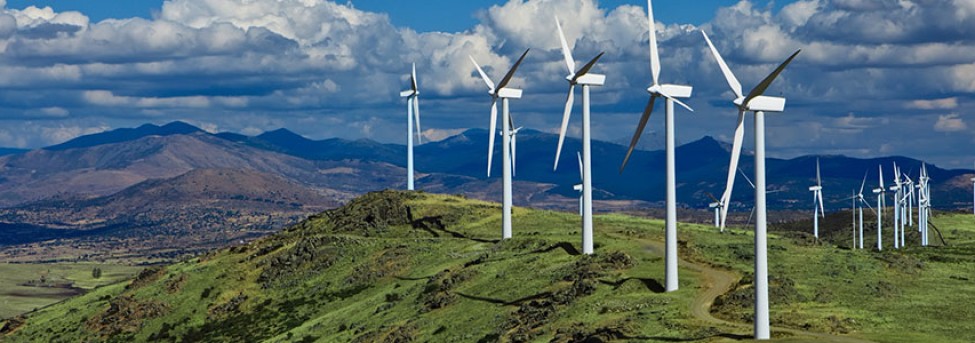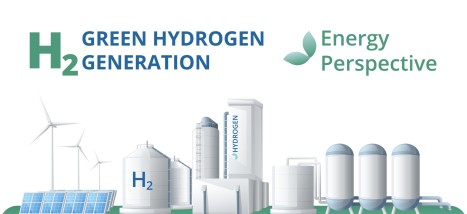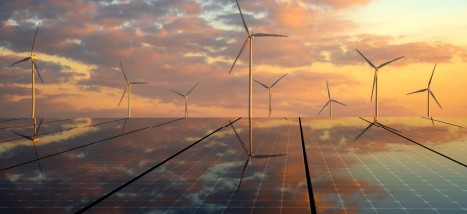-
06 October 2021

What is the efficiency of wind turbines?
Wind energy fits seamlessly into the energy transition to cleaner forms of power generation. Wind turbines are not only good for the climate and the environment, but thanks to technological progress they are also becoming more economically viable. But what is the return exactly?
From wind force 6 full capacity
How much energy a wind turbine generates depends on a number of things. The most important factors for energy efficiency are the size of the wind turbine and the amount of wind where the turbine is located. From wind force 6, a wind turbine runs at full capacity. As a result, energy production is greatest at sea or by the sea.Average windmill: electricity for 2000 households
An average wind turbine of 3 megawatts produces about 6.6 million kWh (kilowatt-hours) on the coast, according to the Dutch Enterprise Agency (RVO). Such energy production covers the electricity consumption of almost 2000 Dutch households or can illuminate 350 sports fields throughout the year. The wind turbine also saves between 2,400 and 3,800 tons of CO2 emissions.Wind turbines at sea or on land?
Placing a wind turbine in the sea is much more expensive than building a wind turbine on land. The payback period is therefore much longer and the financial return is relatively low, especially in the early years. A wind turbine on land offers investors more certainty of return. There are also plenty of windy areas on land.Decreasing costs, better technology
The installation costs of wind turbines have fallen sharply in recent years. The technology is also not standing still: the turbines are becoming more and more efficient. At sea, for example, the cost of installation has fallen by about 40 percent in ten years. The first large offshore wind farms can now be built without a euro subsidy.Cheapest clean energy: 4 to 7 cents per kWh
As a result of the reduced costs, wind turbines are now the most cost-effective way of producing energy sustainably. The cost price will decrease further in the coming years, by 30 to 40 percent, towards the price of coal and gas, according to Ecofys, a research agency for energy saving and sustainable energy applications. In 2023, offshore wind energy will cost less than 5 cents per kWh, while onshore wind energy will cost between 4 and 7 cents per kWh.Return: base rate
This falling cost price is good news for the government and for investors. This means that less and less subsidy will be needed for the construction of wind farms. The experiences of WindShareFund in Germany are promising in this regard. Investors can receive stable, fixed annual interest rates on a solid wind farm of the highest quality and the most securities.Higher efficiency wind turbines in the future
For investors in wind energy, the higher energy efficiency of wind turbines and the falling cost price lead to a higher potential return on investment. Wind energy has thus become a mature investment sector.
-
25 March 2025
 Green hydrogen can contribute effectively to emissions reductionBy: Evertjan van Roekel
Green hydrogen can contribute effectively to emissions reductionBy: Evertjan van RoekelGreen hydrogen often, but certainly not always, leads to CO2 gains. This is evident from research in Nature Energy by Kiane de Kleijne of Radboud University and Eindhoven University of Technology. 'If you calculate the entire life cycle of green hydrogen production and transport, the CO2 gain can be disappointing. But if green hydrogen is produced from very clean electricity and in the region, it can really contribute to emission reductions.'
[Read more...] -
18 February 2025
 Renewable energy investment creates great potentialBy: Evertjan van Roekel
Renewable energy investment creates great potentialBy: Evertjan van RoekelAn investment in renewable energy offers an excellent financial return and a way to put your money to work for people and the environment. Sustainable energy investments also play a crucial role in tackling the global climate problem.
[Read more...]